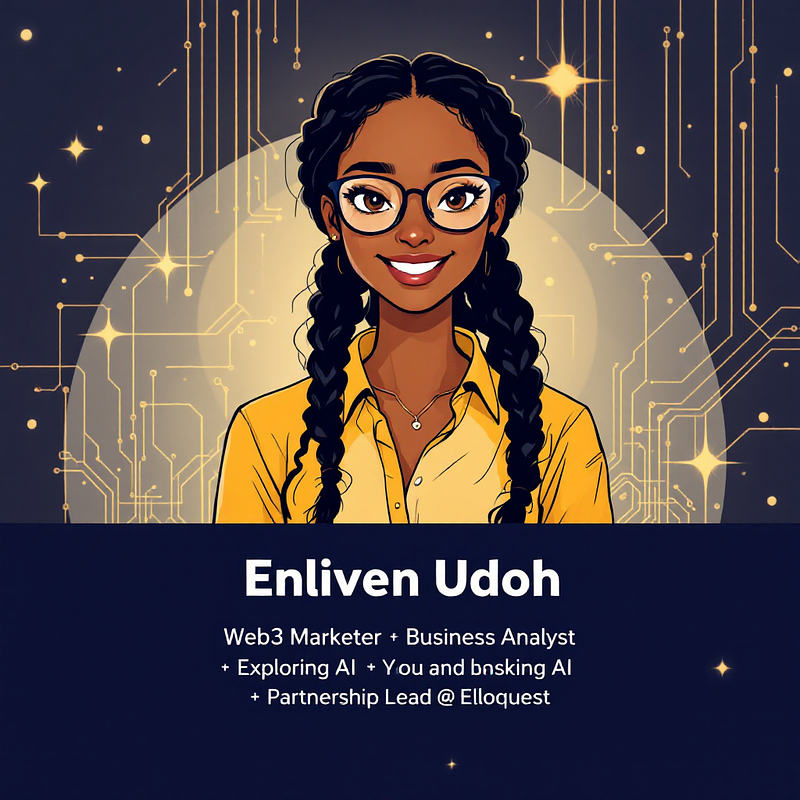4 days ago
Logo Design Brief
Logo Design Brief
Intelligent Context AI
Date: October 24, 2025
Project: Corporate Identity & Logo Design
Company: Intelligent Context AI
1. Company Overview
Intelligent Context AI is the enterprise technology company behind Mivante, a Universal Enterprise Intelligence Platform that transforms workplace communication into quantifiable business capabilities. We solve the fundamental "organizational context problem" - enterprises typically capture only 15-20% of institutional knowledge and lose 80-85% when employees leave.
Our patent-protected technology creates persistent institutional memory that compounds competitive advantage over time, fundamentally differentiating us from stateless AI assistants. We're building the infrastructure layer for enterprise intelligence.
Mission
To make every enterprise conversation, relationship, and interaction intelligently retrievable, actionable, and valuable - creating institutional memory that grows smarter over time.
Vision
To become the "AWS of Communication Intelligence" - the essential infrastructure layer that powers how organizations capture, understand, and leverage their collective knowledge.
2. Brand Positioning
Core Value Proposition
Simple surface, sophisticated depth: The solution appears obvious while masking 90% of technical complexity
Institutional memory that compounds: Unlike point-in-time tools, our platform creates permanent competitive advantage
Persistent context, not stateless responses: We remember everything; traditional AI forgets everything
Market Position
Enterprise B2B SaaS targeting organizations with 500+ knowledge workers
Premium positioning: $150K average contract values
Technical sophistication with executive accessibility
Platform play with ecosystem ambitions
Brand Personality
Intelligent: Sophisticated, data-driven, technically credible
Contextual: Understanding relationships, connections, nuance
Trustworthy: Enterprise-grade security, reliability, permanence
Forward-thinking: Innovation without being flashy or trendy
Professional: Serious business impact, not consumer whimsy
3. Target Audience
Primary Audiences
Enterprise CIOs/CTOs: Technical decision-makers evaluating infrastructure investments
CEOs/COOs: Business leaders seeking competitive advantage and operational efficiency
Enterprise Architects: Professionals assessing integration complexity and scalability
HR/People Operations: Leaders addressing employee engagement and retention
Secondary Audiences
Technology Partners (Microsoft, Google, Salesforce ecosystem)
Strategic Investors (Enterprise SaaS, AI/ML focus)
Implementation Partners and System Integrators
Industry Analysts and Press
What They Value
Technical credibility and architectural sophistication
ROI clarity and measurable business outcomes
Enterprise-grade security and compliance
Long-term strategic value, not tactical point solutions
Integration with existing technology investments
4. Design Direction & Inspiration
Conceptual Themes
Primary Concept: Layered Intelligence
The logo should communicate the idea of multiple layers of understanding building on each other - context building upon context, creating depth and institutional memory over time.
Visual Metaphors to Explore:
Geological strata: Layers that persist and accumulate over time
Neural connections: Intelligence emerging from interconnected relationships
Light refracting through layers: Context revealing deeper meaning
Architectural blueprints: Foundation for building something larger
Memory formations: Information organizing into retrievable patterns
Secondary Concept: Connected Context
Relationships between data points, people, and ideas - the network effect of understanding.
Visual Metaphors to Explore:
Graph networks: Nodes and edges representing relationships
Constellation mapping: Individual points forming meaningful patterns
Synaptic connections: Intelligent linking creating emergent value
Woven fabric: Individual threads creating stronger whole
Tertiary Concept: Temporal Persistence
Unlike ephemeral AI responses, our platform creates permanent, compounding value.
Visual Metaphors to Explore:
Growth rings: Time-based accumulation
Compound interest visualization: Value building on itself
Sedimentary layers: Permanent record formation
Infinite loop/Möbius: Continuous, self-reinforcing cycle
5. Key Concepts to Communicate
Must Communicate
Intelligence: This is an AI/ML company with technical sophistication
Context: Understanding relationships, connections, and deeper meaning
Enterprise credibility: Serious business tool, not consumer app
Permanence/Persistence: Unlike stateless tools, we create lasting value
Nice to Communicate
Innovation and forward-thinking
Simplicity masking complexity
Network effects and interconnection
Trust and reliability
Scalability and architecture
Must NOT Communicate
Consumer app aesthetics
Trendy/flashy startup vibes
Generic "AI" clichés (brain icons, circuit boards)
Complexity without sophistication
Cold, impersonal technology
6. Style Preferences
Visual Style
Modern but timeless: Not chasing current trends, built to last
Geometric precision: Clean lines, mathematical relationships
Depth through simplicity: Sophisticated ideas expressed clearly
Dimensional thinking: Suggest layers, depth, or perspective without clutter
Typography Considerations
Sans-serif preferred: Modern, clean, professional
Medium weight: Authority without aggression
Excellent readability: Must work at all sizes from business card to billboard
Subtle distinction: Slightly modified letterforms acceptable if they add meaning
Color Direction
We're open to exploration, but initial thinking:
Primary Palette Ideas:
Deep Blues: Trust, intelligence, enterprise credibility (avoid generic "tech blue")
Deep Purples/Indigos: Innovation, wisdom, sophistication
Slate/Charcoal: Permanence, stability, foundation
Accent consideration: Subtle warm accent for approachability
Color Psychology Goals:
Trustworthy and reliable
Intelligent and sophisticated
Professional but not cold
Distinctive without being loud
Avoid:
Bright, saturated "startup" colors
Generic tech blues without distinction
Pastels or overly soft palettes
Black/white only (needs some color for differentiation)
7. Technical Requirements
Versatility
Scalability: Must work from 16px favicon to large format
Monochrome versions: Strong recognition in single color (black, white, grayscale)
Responsive adaptations: Consider simplified versions for small applications
Background flexibility: Works on white, dark, and colored backgrounds
Applications
Digital: Website, app icons, email signatures, presentations
Print: Business cards, letterhead, reports, trade show materials
Social: LinkedIn, Twitter, profile images (square crops)
Motion: Potential for simple animations (not required in initial phase)
File Deliverables
Vector files (AI, EPS, SVG)
High-res rasters (PNG with transparency)
Color, grayscale, and black/white versions
Minimum size guidelines
Clear space requirements
Brand usage guidelines
8. Competitive Context
Differentiation Needs
Our logo should stand apart from:
Generic AI/ML Companies:
Avoid: Brain illustrations, neural network diagrams, circuit boards
Instead: More abstract, architectural, institutional
Enterprise Software Companies:
Avoid: Sterile, overly corporate, forgettable
Instead: Memorable, intelligent, with distinct personality
Communication Platforms:
Avoid: Speech bubbles, messaging icons, social media aesthetics
Instead: Deeper meaning, infrastructure, intelligence layer
Companies to Study (for differentiation, not imitation)
Palantir: Sophisticated, serious, slightly mysterious
Databricks: Clean geometry, data-focused, approachable
Stripe: Simple but distinctive, modern sophistication
Cloudflare: Network thinking, infrastructure layer
Notion: Simple but expressive, tool that grows with you
9. What to Avoid
Conceptual Avoid List
Generic "AI" clichés (brains, robots, circuit boards)
Overly literal interpretations (speech bubbles for communication)
Trendy effects that will date quickly (gradients, glass morphism)
Complexity that doesn't add meaning
Looking like a consumer app or consumer AI assistant
Stylistic Avoid List
Hand-drawn or organic styles
Playful or whimsical approaches
Overly aggressive or sharp aesthetics
Feminine or masculine extremes
Abstract art that's too ambiguous
10. Success Criteria
A Successful Logo Will:
Command respect in enterprise boardrooms and technical architecture reviews
Remain memorable after a single PowerPoint presentation
Scale perfectly from tiny favicon to large-format banner
Tell a story about context, intelligence, and institutional memory
Age gracefully looking fresh in 5-10 years
Differentiate clearly from generic AI/SaaS competitors
Support the brand narrative of "simple surface, sophisticated depth"
Enable expansion as the company grows and evolves
Key Questions the Logo Should Answer:
"What does this company do?" → Something intelligent with data/context
"Who is this for?" → Serious enterprise customers
"Can I trust them?" → Yes, they're sophisticated and credible
"Are they innovative?" → Yes, but not in a gimmicky way
11. Project Timeline & Process
Preferred Approach
Concept exploration: 3-5 distinct conceptual directions with rationale
Refinement: 2 strongest concepts developed further
Finalization: Single direction refined to perfection
Application examples: See logo across various contexts
Collaboration Style
We value:
Strategic thinking: Understanding the "why" behind design decisions
Clear communication: Articulating choices and rationale
Iteration: Refining toward excellence, not settling for first good idea
Systems thinking: How logo works within larger brand ecosystem
12. Additional Context
Brand Name Considerations
"Intelligent Context AI" breaks down as:
Intelligent: Core capability, AI/ML foundation
Context: Differentiator, our unique value
AI: Category identifier, market clarity
The logo can work with:
Full name: "Intelligent Context AI"
Abbreviated: "IC AI" or "ICAI"
Standalone mark without text (once brand is established)
Platform Name Integration
Our flagship product is Mivante - the logo system should allow for clear hierarchy:
Company: Intelligent Context AI
Product: Mivante (powered by Intelligent Context AI)
Consider how these two brand elements work together without confusion.
13. Inspiration References
Abstract Concepts
Topographic maps showing layered elevation
Sedimentary rock formations showing time and depth
Network topology diagrams showing interconnections
Memory palace concept from classical rhetoric
Library card catalog systems (organizing knowledge)
Visual References
Isometric architectural drawings
Data visualization aesthetics (Edward Tufte)
Minimal, geometric abstractions
Swiss design principles
Bauhaus form-follows-function philosophy
14. Questions for Designer
How do you approach balancing sophistication with accessibility?
What's your process for ensuring a logo ages well vs. chasing trends?
How do you think about representing abstract concepts like "context" visually?
What examples from your portfolio show enterprise B2B brand work?
How do you handle the challenge of standing out in a crowded AI/ML space?
Contact & Next Steps
Project Lead: Ash (Founder, Intelligent Context AI)
We're excited to see thoughtful, strategic approaches that understand both the technical sophistication of our platform and the enterprise market we serve. The best designs will tell a compelling story about institutional memory, contextual intelligence, and permanent competitive advantage.
This brief represents our current thinking and we welcome designer insights that might challenge or expand these directions. Strong rationale can override any guideline presented here.
Logo Text
Intelligent Context AI














